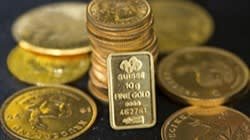With the prospect of a disruptive global trade war looming into view, nervous investors have stepped up their exposure to precious metals. You could be forgiven for thinking that emerging market central banks have been the prime drivers of the market in recent times, but – as with equities – the activity of retail investors has an outsized bearing on the fluctuations of the gold price, not least because of the influence of pooled accounts. With geopolitical anxieties to the fore, analysts at UBS believe that the price could eclipse $3,200 (£2,481) by the end of the year.
The LBMA gold price is fixed twice a day, morning and afternoon, on the London Bullion Market. It’s still a somewhat insular affair, although the process has been refined and is more transparent than when the original five London banks met daily at Nathan Mayer Rothschild & Sons. Liquidity is a key consideration, so the involvement of trading houses is vital to create a platform for equitable transactions.
There are those given to a conspiratorial worldview who maintain that the gold price is held artificially low; considering why and by whom can get you into real ‘tin hat’ territory. What is indisputable, however, is that you will be expected to pay a premium – above and beyond dealer commissions – for the physical commodity over the ‘electronic’ price. This premium will vary in accordance with the outlook on capital markets and the US dollar, and perhaps even the astrological variations that inform the Hindu wedding season.
Commodity traders might beg to differ, but ploughing your capital into physical gold doesn’t amount to an investment strategy; it’s more in keeping with an insurance policy. And if you wanted to purchase gold as a hedge, either in relation to inflation, or, say, an extended downturn in equities and/or fixed interest markets, you would probably be well advised to utilise derivative contracts.
Dealing costs are relatively low when compared to bullion suppliers. At the time of writing, you could purchase a 2025 1oz Britannia gold coin from Sharps Pixley for £2,396, against the LBMA rate of £2,339, roughly a 2.5 per cent premium on a single trade. Commissions on western European exchange-traded funds (ETFs) usually cost £3/€3 per trade for typical deal sizes. It’s worth bearing in mind that there is also counterparty risk to consider, no matter how unlikely the prospect that the manager of your physically backed ETF might not be able to make good on delivery. When you consider the spectacular growth of ETFs since the turn of the millennium, with around 1.6mn holders in the UK alone, it probably isn’t surprising that questions have emerged as to the ability of issuers to make good on their asset-backed derivatives if push came to shove.
If you’re primarily concerned about the debasement of a fiat currency, then you could do worse than stuff a bagful of sovereigns under the mattress. Recent dollar weakness lends credence to the goldbugs’ view that the yellow metal is the ultimate safe haven asset, although you can hold that viewpoint while simultaneously questioning the yellow metal’s utility as an investment.
For the purposes of our readership, it’s probably worth examining whether gold and silver mining stocks can outperform their underlying commodities. The short answer to this from an historical perspective is ‘yes’, although it only tends to occur during bull markets for the metals, and is by no means uniform even then, as recent trends show.

The bottom line is that well-run precious metals miners can benefit from operational gearing as they typically have high fixed costs, meaning they can expect margin expansion when precious metals prices rise, leading to a surge in profitability. And history also shows that a major move in bullion prices is often followed by significant outperformance by precious metals stocks.
So, where are we now? In general, the precious metals miners have suffered a de-rating over the past three years relative to the gold price, as can be seen by the rebased performance of both Barrick Gold (US:GOLD) and Newmont Corp (US:NEM) – the world’s two largest producers – in the accompanying chart. Put simply, the price of gold has soared, but capital returns have failed to keep pace with earnings upgrades, presenting an opportunity for investors as the divergence narrows.







